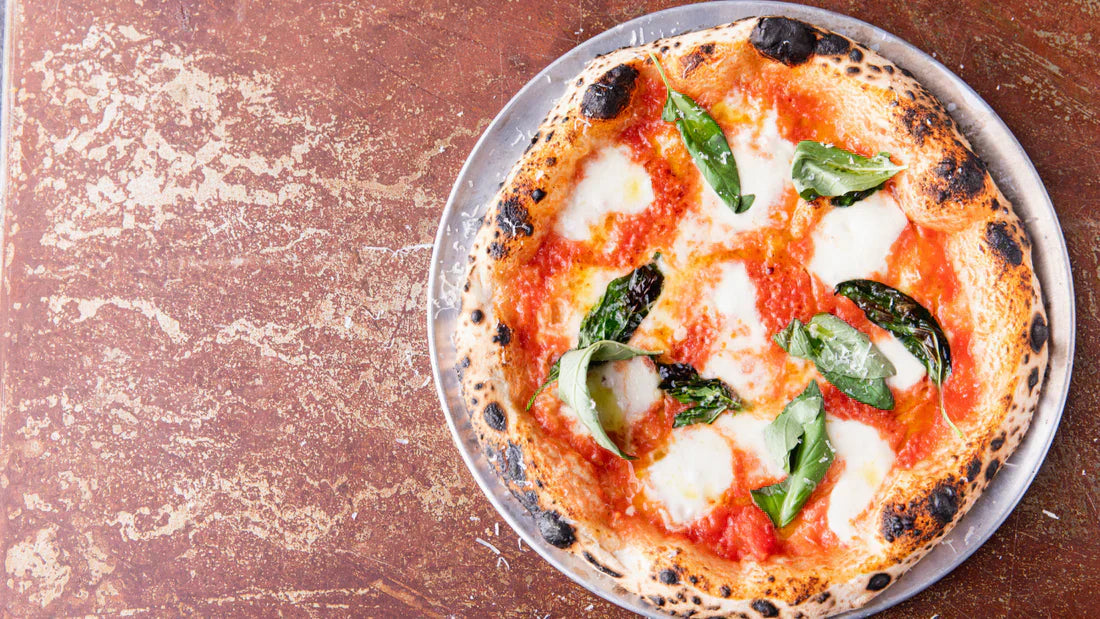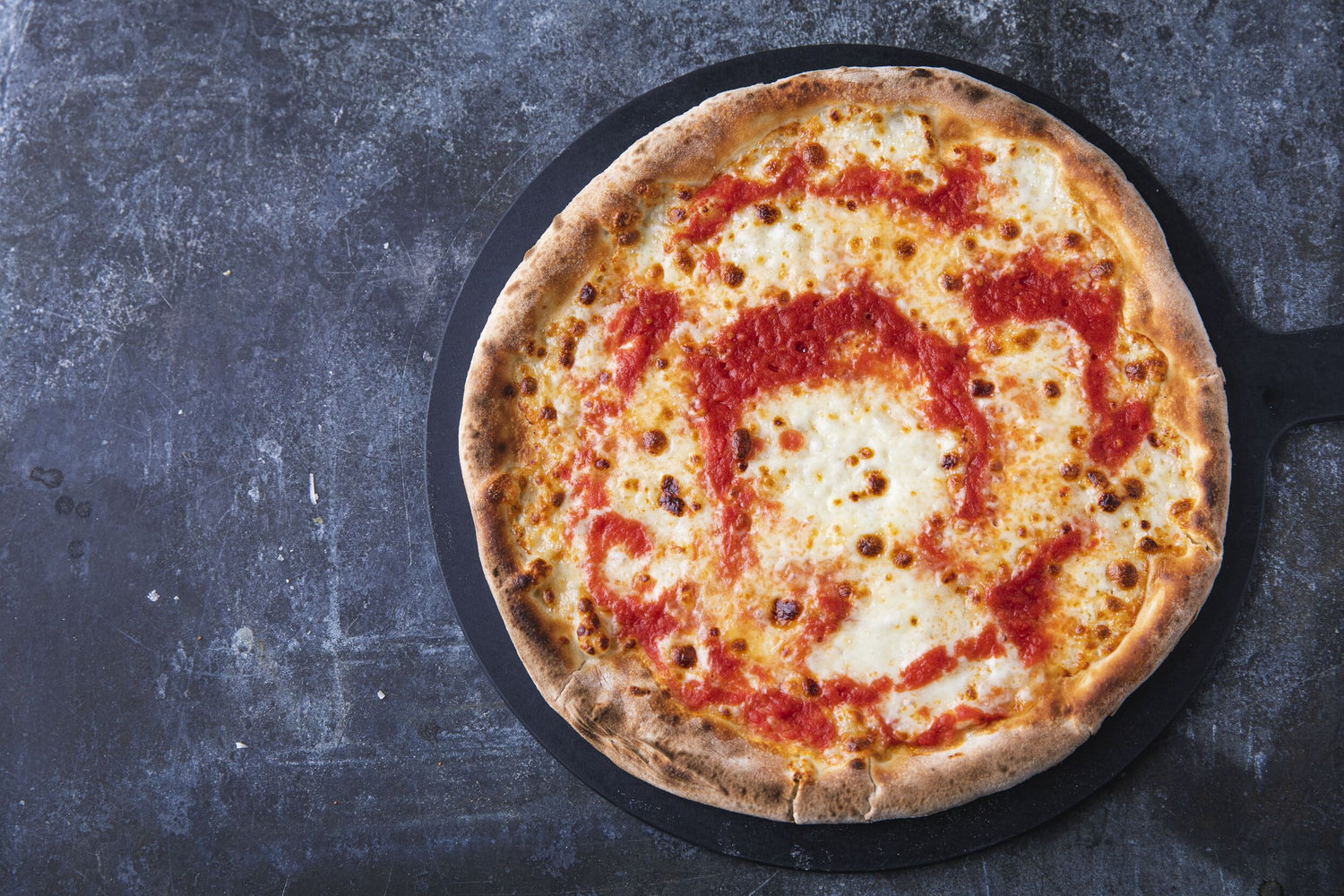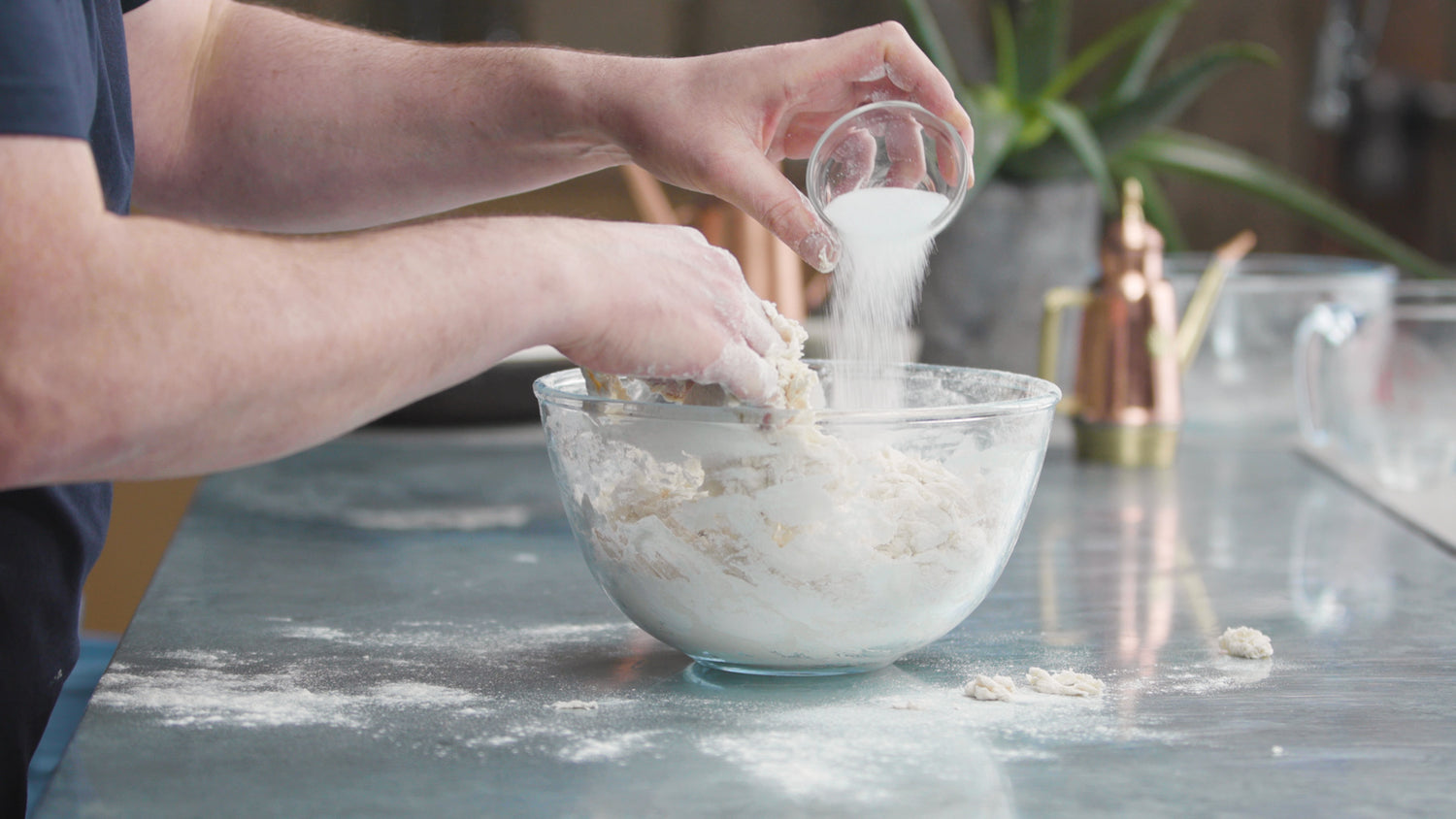There’s nothing quite like the crackle of dough hitting a hot stone, the smell of wood smoke curling through the air, and that first molten bite of pizza straight from the oven. If that picture makes your mouth water, you’re in the right place.
Pizza is more than just a beloved comfort food—it's a global phenomenon with deep cultural roots and an incredible variety of styles. From its humble beginnings in the streets of Naples, Italy to its reinvention across regions of the United States, pizza has evolved into many delicious forms, each reflecting local traditions, ingredients, cooking methods and tastes.
Regional differences play a significant role in the world of pizza. Local climates, cultural influences, and culinary preferences all shape the types of pizza you find across the globe. For example, the contrast between traditional Italian pizzas and American-style pizzas is striking: Italian pizzas often focus on simplicity and high-quality ingredients, cooked quickly in wood-fired ovens, while American pizzas embrace bold flavors, thicker crusts, and inventive topping combinations.
In this guide, we’ll explore the different kinds of pizza—from traditional Italian classics to iconic American styles— offering insights into their preparation, ingredients, and history, and share how you can recreate them at home using a Gozney pizza oven.
Whether you’re a casual enthusiast or a seasoned home cook, this journey through the world of different types of pizza is sure to inspire you.
Ready to dive in? Explore our recipes and discover the perfect pizza style for your next homemade pizza creation.
Traditional Italian-Style Pizza
With a history dating back over a thousand years, Italian-style pizza is a beloved classic enjoyed across the world. Differences in the fresh, regional ingredients available across Italy have shaped these different kinds of pizzas, from the sweet San Marzano tomatoes of Campania to crumbly Pecorino Romano cheese.
Traditional Italian-style pizza is often crafted using artisanal methods by hand or with simple tools, slowly and carefully to create textures from soft and chewy to airy and crispy. A wood-fired pizza oven is often the cooking method of choice, the high temperatures creating bubbles in the dough and charring the crust for an extra layer of flavor. There’s great variety in the bases of Italian-style pizza, with crispy Pizza Romana ideal for those who like a thin base, and the classic focaccia-like dough of the Sicilian pizza for those who like something a little thicker.
Check out some of the most iconic traditional Italian-style types of pizza below.

Neapolitan Pizza
Recognized by UNESCO as an intangible cultural heritage, Neapolitan pizza hails from Naples, Southern Italy’s largest city. It features a simple yet delicious array of toppings–San Marzano tomatoes, fresh buffalo mozzarella, basil, and a drizzle of olive oil. The Neapolitan has a soft, chewy crust made from Caputo 00 flour–a high-quality, finely milled white flour with a high protein content and elastic gluten, which creates the airy texture of the Neapolitan dough. The dough is traditionally kneaded by hand or very slowly in a mixer, shaped without using a rolling pin, and then cooked for about a minute in a wood-fired oven at over 800°F to give it that recognizable, charred texture.
Enjoy a taste of Naples in your own home with our Neapolitan pizza recipe–this is a particularly good recipe for our Dome or Roccbox pizza ovens.

Sicilian Pizza
Also known as sfincione, this thick-crust pizza is made from an airy, focaccia-like dough, and is often baked in a well-oiled, square pan to give it its unique shape and crispy bottom. Traditional toppings include tomatoes, onions, herbs–often oregano–and anchovies for little bursts of salt. Some Sicilian pizzas come without cheese, but for cheese-lovers, strong, hard varieties like Pecorino Romano are traditional. After becoming the go-to in Sicily in the mid-19th century, Sicilian pizza also found its way over to the United States, where it became a favorite with its fluffier, oiler dough, making for a softer crust.
Give this dish a try with our Sicilian pizza recipe, or add a twist with a vodka Sicilian pizza recipe.

Roman Pizza
There are two different pizza types which may be referred to as Roman pizza in Italy: Pizza al Taglio and Pizza Romana. Pizza al Taglio is rectangular, baked in large trays, and sold by weight, making it perfect for a quick, casual bite. In contrast, Pizza Romana is thin, round, and served whole, ideal for sit-down meals.
A hallmark of Roman pizza is its thin, crispy crust. Though there is no official definition of the pizza’s ingredients and toppings like the Neapolitan, the dough tends to be lower in hydration compared to other styles, resulting in a drier, crunchier base that supports toppings without becoming soggy.
Typical toppings are simple yet flavorful. Tomato-based pizzas often feature fresh herbs, anchovies, olives, or cured meats, while pizza bianca (white pizza) focuses on minimalism with ingredients like olive oil, garlic, and ricotta.
Make your own delight from Rome with this Roman style pizza recipe.
Pizza al Taglio
Pizza al Taglio–translating to pizza by the slice–is a beloved Italian street food. As we mentioned above, it tends to be cooked in large trays to be sold by weight, making it a popular, convenient meal in major Italian cities from its birthplace in Rome and beyond. Slices are often cut to order, which means you can choose both the size and the toppings.
Pizza al Taglio caters to all tastes, with the endless topping combinations ranging from vegetarian options like fresh vegetables and cheeses to meat-based choices such as sausage, pepperoni, and anchovies. It’s perfect for a quick, satisfying snack on the go.

Calzone
This folded type of pizza, often baked or fried, creates a portable, handheld version of the classic dish. The dough is folded over a variety of fillings, sealing in the ingredients and forming a distinguishable half-moon shape. Traditional fillings for a calzone include ricotta, mozzarella, and a mix of cured meats such as ham or salami, along with vegetables like mushrooms, spinach, and peppers. These ingredients offer a rich, flavorful combination that contrasts with the simpler toppings of a traditional pizza.
The key difference between a calzone and traditional pizza lies in the preparation and cooking method. Unlike a typical, open-faced pizza, the way a calzone is sealed gives it a thicker, more doughy texture. It’s often baked at a high temperature for a shorter time to ensure the crust is golden and crispy with the filling inside thoroughly heated.
Try your hand at making your own calzone with this mushroom and ricotta calzone recipe or pepperoni calzone recipe.
American-style Pizza
Pizza in the U.S. has evolved significantly from its Italian roots, shaped by the creativity of Italian immigrants and the diverse tastes of American diners. Over time, it adapted to local preferences, resulting in styles that are distinctly American.
Unlike traditional Italian pizzas, American pizza types are often larger, with thicker crusts and a wider variety of toppings, catering to a range of flavors and textures. Key regional styles such as Chicago’s deep-dish, New York’s thin, foldable slices, and Detroit’s crispy, cheesy edges highlight the influence of local ingredients and culinary traditions.
Each style reflects the ingenuity of American pizza-making and its place in the nation’s food culture.

Chicago Pizza
Chicago is renowned for its distinct pizza styles, ranging from deep-dish to thin crust. The Chicago deep-dish pizza is famous for its thick, buttery crust and a chunky tomato sauce, often layered with generous amounts of cheese–traditionally mozzarella–and toppings, creating a hearty, pie-like dish. In contrast, Chicago’s thin-crust pizza is crispier, with a more delicate crust and minimal toppings for a lighter kind of pizza.
Famous pizzerias like Lou Malnati’s and Giordano’s are well-known for pioneering these styles, each offering a unique flavor profile that has become synonymous with Chicago pizza.
Looking to recreate Chicago pizza at home? Check out our Chicago deep dish pizza recipe or Chicago thin crust pizza recipe.

New York Pizza
Famous for its thin, foldable slices, New York pizza is the perfect grab-and-go meal–much like the traditional Pizza al Taglio in Rome. The pizza's crust is made from high-gluten dough, giving it a chewy yet crispy texture, and fresh mozzarella provides a creamy, melt-in-your-mouth topping. Cooked in a high-temperature oven, New York pizza achieves its signature crispness and flavor.
New York pizza has become a global icon, representing the city’s diverse food culture. Its influence stretches worldwide, with pizzerias in nearly every major city offering their take on this beloved style.
If you're eager to recreate this classic for yourself, try this New York style pizza dough recipe for the perfect base.

Detroit Pizza
Detroit pizza is easily recognizable for its square shape and thick, crispy crust, which forms a delicious, golden edge around the cheese. This pizza style is unique in that the cheese is spread directly on the dough, creating a rich, cheesy layer, with the sauce added on top for a distinct texture and burst of flavor.
Though Detroit pizza may look like the traditionally square Sicilian pizza, its thicker, airier crust and the layering style of toppings sets it apart, with the sauce resting on top rather than being baked into the dough to give it a more pronounced contrast between the soft interior and crispy exterior.
For a taste of this iconic pizza, check out these recipes: Detroit pepperoni pizza recipe and Detroit mushroom pizza recipe.
St. Louis Pizza
St. Louis pizza stands out with its ultra-thin, cracker-like crust, which is made without yeast, giving it a crisp, crunchy texture. Unlike many pizza types, this crust is light and dry, providing a unique base for the toppings. A defining feature of St. Louis pizza is the use of Provel cheese, a processed blend of mozzarella, cheddar, and Swiss, which melts into a distinctive, creamy, and slightly tangy layer.
St. Louis pizza is another type of pizza known for its square-cut slices, often referred to as "party cut," offering a different presentation and making it easy to share. The small, bite-sized squares are perfect for enjoying in a social setting.
California Pizza
California pizza is renowned for its gourmet toppings and fresh, often non-traditional ingredients. Reflecting the state's emphasis on health-conscious and creative culinary styles, California pizzas often feature toppings like arugula, goat cheese, fresh tomatoes, and even smoked salmon. This style emphasizes the use of seasonal, locally sourced produce for a vibrant, fresh flavor. Popular variations include BBQ chicken pizza, with smoky-sweet sauce, and white pizza, topped with fresh vegetables and a creamy base.
The emphasis on unique combinations and fresh ingredients makes California pizza a creative, versatile alternative to traditional styles, appealing to those seeking a modern twist on the classic pizza experience.
Enjoy Types of Pizza from Around the World with Gozney Pizza Ovens
From the chewy crust of Neapolitan pizza to the crispy edges of Detroit style, the diverse world of pizza celebrates regional flavors and culinary creativity. Local ingredients, cultural influences, and traditional cooking methods define these distinct styles, offering something for every palate.
Ready to recreate these iconic styles at home? With Gozney’s professional-grade pizza ovens and pizza recipes, you can elevate your pizza-making skills and enjoy authentic flavors. Experiment with different doughs, toppings, and techniques to bring your favorite styles to life.








